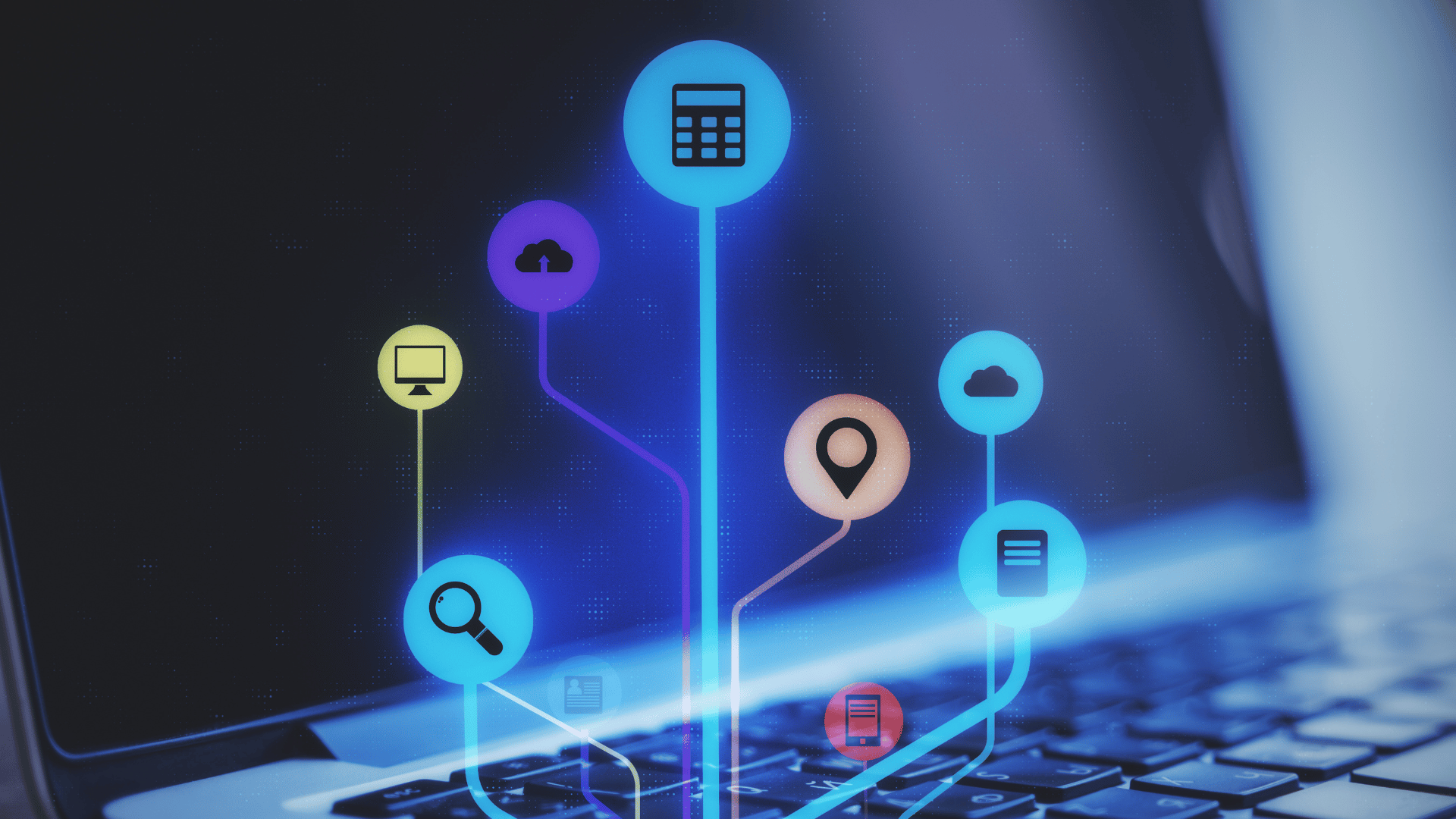Key Takeaways:
- Cloud Attendance Management offers improved accuracy and efficiency in tracking employee attendance, leading to streamlined processes and reduced human errors.
- Implementing Cloud Attendance Management in customer service and healthcare institutions has proven to be successful, showcasing its versatility across different industries.
- Clear communication, proper training, integration with existing systems, and regular maintenance and updates are some of the best practices for successful Cloud Attendance Management implementation.
Effective attendance management is a cornerstone of organizational success, and the adoption of cloud-based solutions has revolutionized the way businesses approach this crucial task. In this section, we will explore the significance of attendance management and provide an overview of how cloud-based systems have reshaped the landscape. Stay tuned to discover the benefits and insights these technological advancements bring to streamline workforce management processes.
Importance of Attendance Management
Attendance management is key for any organization or institution. It involves tracking and managing attendance records, which are needed for payroll, performance, regulations, and resource planning. Cloud-based systems have made this even more efficient. Benefits include: accurate attendance data, efficient time tracking, insightful reports, and compliance with regulations.
When selecting a cloud-based solution, consider security measures, customization, scalability, and user-friendliness. Clear communication and training are also important to ensure successful adoption. Regular maintenance and updates are also necessary for long-term success.
Cloud-based attendance management is essential for efficiency, regulations, and decision-making. It has been successful in multiple industries, from customer service to healthcare. Leverage the power of cloud tech to streamline attendance, save costs, and improve safety.
Cloud Attendance Management: Showing up is half the battle, tracking it is the other.
Overview of Cloud Attendance Management
Cloud Attendance Management is key for workforce management. It uses cloud-based tech to track and manage employee attendance. From anywhere, organisations can access real-time attendance data. This makes it simpler to monitor staff attendance and boost efficiency.
Real-time access: With Cloud Attendance Management, organisations can view attendance data in real-time, no matter the location.
Automated tracking: Cloud-based systems automate the attendance tracking process. This eliminates manual actions and decreases potential errors.
Flexible reporting: Cloud Attendance Management systems have flexible reporting options. Organisations can create customised reports on attendance data.
Integration with other systems: These systems seamlessly integrate with other HR and payroll systems. This streamlines processes and ensures accurate record-keeping.
Enhanced security: Cloud-based solutions provide strong security measures to protect attendance data.
Cloud Attendance Management has been deployed in multiple industries. For instance, customer service organisations use it to track hours and lift scheduling efficiency. Similarly, healthcare institutions monitor staff attendance in real-time to guarantee sufficient staffing levels and improve patient safety.
In addition to these benefits, Cloud Attendance Management yields a high return on investment (ROI). The ROI considers factors such as time saved from manual processes, fewer attendance tracking errors, cost savings from better efficiency, and improved staff satisfaction. These long-term gains make the adoption of cloud-based systems a sensible choice for organisations looking to streamline workforce management processes.
When choosing a cloud attendance solution, organisations must evaluate their needs and requirements. This includes the organisation size, employees, and attendance tracking needs. Vendor selection criteria should also be considered, including system reliability, data security measures, customer support services, and cost-effectiveness.
Benefits of Cloud Attendance Management
Cloud Attendance Management brings a diverse range of benefits that revolutionize traditional attendance systems. From improved accuracy and efficiency to enhanced staff safety and significant cost savings, this section dives into the advantages this technology offers. Discover how Cloud Attendance Management can transform the way organizations handle attendance tracking, ensuring seamless operations and streamlined processes.
Improved Accuracy and Efficiency
Cloud Attendance Management is an upgraded solution that ensures accuracy and productivity when tracking attendance data. By using cloud technology, organizations can simplify their attendance management, leading to better recording of staff attendance and improved efficiency.
A comparison table of the traditional manual attendance system and the cloud one shows the advantages of improved accuracy and productivity:
| Traditional Manual Attendance Management | Cloud Attendance Management |
|---|---|
| Involves manual entry and calculation of attendance data | Automates attendance tracking |
| Prone to errors and inaccuracies | Ensures accurate attendance records |
| Time-consuming for HR personnel | Saves time by automating tasks |
| Incurs costs for paper-based records and storage | No need for physical record-keeping |
Plus, cloud attendance management has unique features like immediate reporting and analytics, integration with other HR systems, and remote access. These perks increase accuracy and efficiency by giving instant access to up-to-date attendance info, enabling effortless integration with existing HR systems, and allowing employees to clock in/out from anywhere.
Basically, using a cloud-based attendance management solution not only raises accuracy but also boosts overall efficiency in an organization. Automating manual processes, eliminating errors, lightening the administrative burden, and granting real-time access to data, organizations can significantly improve their attendance management practices.
Enhanced Staff Safety: Cloud technology keeps you safe at all times.
Enhanced Staff Safety
Staff safety is a must in cloud-based attendance management systems. Cloud tech lets orgs enhance safety in various ways.
1. Real-time monitoring: Track staff presence and location. Respond to emergencies quickly.
2. Emergency alerts: Automate distress signals for staff members.
3. Lone worker safety: Track and give help if needed.
4. Access control systems: Make sure only authorized people enter areas.
5. Real-time reporting: Spot patterns that indicate security risks.
6. Enhance communication during emergencies: Centralized platform for coordination and info sharing.
These measures boost staff safety. Plus, features like biometric authentication and geofencing help without compromising efficiency.
Cost Savings
Cloud attendance management can provide huge cost savings! By adopting a cloud-based system, you can kiss goodbye to pricey servers and IT staff. Plus, automated processes mean less time spent on manual data entry and processing.
Here are some key savings:
- No need for hardware or software = reduced upfront costs.
- No maintenance required = no need for IT staff or consultants.
- Automation = more efficient attendance tracking.
- Compliance features = accurate payroll calculations, avoiding penalties.
It’s clear that cloud attendance management offers more bang for your buck. Consider switching to a tailored cloud solution today and start saving!
Successful Implementation Examples
Successfully implementing cloud attendance management can lead to significant improvements in various sectors. This section explores specific examples of successful implementation, focusing on customer service and healthcare institutions. Discover how these organizations have leveraged cloud-based attendance management systems to streamline operations, enhance productivity, and optimize resource allocation. From improved internal communication to better compliance with labor regulations, these real-life instances showcase the transformative power of cloud attendance management.
Implementation in Customer Service
Cloud attendance management systems offer several advantages for businesses in the customer service domain. Benefits include:
- Tracking staff attendance accurately and efficiently
- Real-time monitoring and alerts for safety
- No need for physical clocks and manual record-keeping
- Optimized staffing to keep customers satisfied
Many examples prove these systems can work in customer service. For example, call centers use them to track employee hours and ensure the right number of staff. Also, hospitality businesses use cloud attendance management to adjust shifts according to demand.
In conclusion, cloud-based attendance solutions help streamline customer service operations while increasing accuracy, efficiency, safety, and cost savings. Businesses should select a suitable vendor and create a system that suits their needs.
Implementation in Healthcare Institutions
Cloud attendance management systems in healthcare institutions have proven beneficial. They track staff attendance accurately and efficiently, so that the right personnel are always present. This is vital in a healthcare setting where timely access to medical professionals is key.
These systems also improve staff safety. By recording attendance data, they stop unauthorized persons from entering sensitive areas. This decreases the risk of theft or patient harm.
Cloud attendance management systems save costs too. By automating attendance tracking, they remove manual record-keeping and administrative tasks. This gives healthcare professionals more time to focus on patient care.
Best Practices for Successful Cloud Attendance Management
Discover the best practices for successful cloud attendance management, including:
- Clear communication and training
- Integration with existing systems
- Regular system maintenance and updates
These key aspects not only contribute to effective implementation but also ensure optimized utilization of the cloud attendance management system. Stay ahead of the curve and unlock the potential of cloud-based attendance tracking with these tried and tested strategies.
Clear Communication and Training
Communication and training are essential when introducing cloud attendance management systems. It is important to explain the purpose, features, and advantages of the system to employees to make sure they comprehend and cooperate. Besides, providing enough training to employees helps them master the system and understand how it can boost their work productivity.
Communication is key to helping employees comprehend the importance of accurate attendance tracking and its effect on operations. Moreover, through training, employees can learn how to use the cloud attendance system properly, ensuring correct time recording.
Keeping employees informed about any updates or changes in the system helps prevent confusion or opposition. Technical aspects should be covered in the training; however, employees should also be educated about data privacy and security measures implemented within the cloud system.
Feedback and support channels increase employee engagement and quickly resolve issues. Additionally, clear communication regarding expectations related to attendance tracking ensures consistency in employee compliance, reducing errors and inaccuracies.
Organizations should provide ongoing support to answer questions or troubleshoot when implementing cloud attendance management systems. Checking in regularly with employees can help identify where extra training or clarification is necessary. This consistent communication ensures smooth adoption of the system throughout the organization.
A large customer service organization implemented cloud attendance management and experienced a 30% increase in accuracy in attendance tracking. This led to improved scheduling efficiency and decreased administrative costs. They found open channels for feedback helped address issues speedily, making sure employees were satisfied with the new system.
By emphasizing clear communication and training during implementation, organizations can maximize the benefits of cloud attendance management systems while minimizing disruptions during transition periods.
Integration with Existing Systems
It’s essential to implement an integration strategy. By combining a cloud attendance system with HR management tools, payroll software, and employee databases, organizations can be efficient and reduce manual work.
Integration with existing systems streamlines work and improves data reliability. Real-time data sharing between platforms gives organizations a consolidated view of attendance information.
Integration with Existing Systems is key for organizations that want to use cloud attendance management solutions effectively. Connectivity makes data transfer reliable between cloud-based solutions and legacy systems. Without integration, organizations risk ineffective resources and inefficient workflows.
Regular System Maintenance and Updates
Regular maintenance and updates of the system are vital for its seamless running and optimal performance. With regular maintenance and updates, organizations can stop system breakdowns, security breaches, and data loss, while also improving the user experience.
Thus, here’s a 4-step guide for regular system maintenance and updates:
| Steps | Description |
|---|---|
| Back Up Regularly | It is essential to back up all data stored in the system to protect from potential data loss due to hardware failure or unexpected events. This guarantees that even in the event of a system failure, important information can be retrieved without major disruptions. |
| Software Updates | Regularly updating the software used in the attendance management system is necessary to stay current with the latest features, bug fixes, and security patches. These updates not only address any present vulnerabilities but also boost the overall functionality and reliability of the system. |
| Routine Security Audits | Doing routine security audits helps identify any possible weaknesses or vulnerabilities in the system’s infrastructure or protocols. By proactively resolving these issues, organizations can fortify their barrier against unapproved access, hacking attempts, or data breaches. |
| Performance Optimization | Regularly examining and optimizing the performance of the attendance management system ensures that it runs efficiently and effectively. This involves monitoring key performance metrics, identifying bottlenecks or areas for improvement, and implementing necessary changes to enhance speed, reliability, and scalability. |
It is noteworthy that regular maintenance and updates must be done by experienced IT professionals following industry best practices to minimize any possible risks or disruptions during the process.
Apart from the steps mentioned above, it is imperative to plan regular downtime for doing maintenance activities without negatively influencing daily operations. Careful planning of these schedules will help guarantee minimal disruption while maximizing efficiency.
Organizations must prioritize regular maintenance and updates as they have a crucial role in sustaining an optimal functioning attendance management system over time.
ROI of Cloud Attendance Management
In this section, we will delve into the ROI of cloud attendance management, focusing on the calculation of ROI and the long-term benefits. Discover how implementing cloud attendance management can lead to cost savings, improved efficiency, and increased employee productivity. Uncover the facts and figures that support the positive impact of this technology-backed solution for businesses.
Calculation of ROI
ROI (Return on Investment) is key for organizations to work out the financial advantages of using cloud attendance management. Companies can assess the cost and gain from this system by analyzing them. As an example, let’s consider an organization that intends to implement a cloud attendance management system.
To calculate ROI, the following elements should be considered:
| Initial setup cost | What it costs to purchase and install the cloud attendance system. |
|---|---|
| Ongoing maintenance cost | Expenses for updates and maintenance. |
| Training cost | Costs for training staff on using the system. |
| Time savings | Less time spent on tracking attendance. |
| Efficiency improvements | Enhanced productivity due to streamlined attendance process. |
| Cost savings | savings from eliminating paper-based systems. |
Organizations can determine their ROI by comparing the costs and advantages. This assists to work out if investing in a cloud attendance solution is financially reasonable.
The long-term benefits should also be looked at, such as scalability, decreased errors and improved data accuracy. These all lead to better operational effectiveness and production.
Long-term Benefits
Cloud attendance management provides several long-term advantages. It can help organizations experience increased productivity, better data accuracy, and reduced administrative expenses. Plus, it integrates with existing systems and provides regular maintenance and updates.
Its long-term perks include boosted efficiency. Automating attendance tracking processes, reducing manual errors, and streamlining payroll procedures can improve productivity. Employees can focus on their core tasks instead of attendance management. Data accuracy is also improved, reducing discrepancies in employee records.
Safety is also better. Cloud attendance management systems let organizations monitor employee check-ins and check-outs in real-time, especially for remote workers or those in hazardous environments. Emergencies or accidents can be handled quickly to ensure the safety of employees.
Moreover, cloud-based attendance management solutions offer significant cost savings. Eliminating paper-based processes and manual data entry can save on printing and storage costs. Organizations can also adapt to changing workforce sizes without additional expenses.
By finding the perfect solution and following best practices, such as clear communication and training, organizations can capitalize on the long-term benefits of this technology. The right choice will keep their employees on cloud nine.
Choosing the Right Cloud Attendance Solution
When it comes to choosing the right cloud attendance solution, the key lies in evaluating your needs and requirements, as well as carefully considering vendor selection criteria.
In this section, we’ll explore the importance of understanding your specific needs and what to look for when selecting a vendor for your cloud attendance management system.
So let’s dive in and discover how to make an informed decision that aligns perfectly with your organization’s requirements.
Evaluation of Needs and Requirements
Evaluating an organization’s needs and requirements is key. Consider the size, regulations, and existing systems. Also, scalability, ease of use, and customization are important. This way, identify features that suit the organization.
By assessing these needs and requirements, organizations can select the right cloud attendance solution. This leads to improved accuracy, efficiency, safety, cost savings, and success with attendance management.
Don’t risk it! Choose the right vendor to ensure your HR goals are met.
Vendor Selection Criteria
When it comes to choosing a vendor for cloud attendance management, organizations need to consider some key factors. These include:
| Experience and Expertise | Technology Compatibility | Scalability and Flexibility | Security Measures | Support and Maintenance |
|---|---|---|---|---|
| To evaluate the vendor’s experience in implementing cloud attendance management and their expertise in similar organizations or industries. | To ensure the vendor’s system is compatible with the organization’s existing systems and infrastructure. | To confirm the vendor’s solution can grow with the organization and meet changing needs. | That the vendor follows robust security measures to protect sensitive employee data. | The level of support and maintenance post-implementation, such as response time, training and troubleshooting assistance. |
Organizations should review potential vendors based on their own needs to guarantee a successful cloud attendance management implementation. Extra criteria may apply in some cases.
Conclusion
Cloud attendance management has completely changed the way businesses keep track of their employees. With cloud-based systems, businesses can monitor employee attendance accurately and efficiently from any location or device. Plus, they have access to automated notifications and real-time data updates.
Cloud attendance management provides many advantages for businesses, such as reducing the need for physical storage space, lessening manual errors, and saving time. It also provides valuable insights into attendance patterns and trends. Additionally, cloud attendance management is easily scalable for businesses of all sizes and offers customizable features.
The development of cloud attendance management has been a fascinating journey. Initially, businesses used manual methods. But, these weren’t as efficient, accurate or convenient. As cloud technology advanced, so did the capabilities of attendance management systems. Now, cloud attendance management is the norm for businesses of all sizes!
FAQs
Ques 1. How has cloud attendance management helped companies improve staff management and time management?
Ans 1. Cloud attendance management systems, such as Mitrefinch’s time and attendance system, provide real-time information and accurate data, allowing companies to effectively manage their staff and monitor time management. These systems eliminate the need for manual processes like clock cards, saving time and improving efficiency.
Ques 2. Can cloud attendance management systems handle different shift patterns?
Ans 2. Yes, cloud attendance management systems like Mitrefinch’s are designed to handle different shift patterns. They offer flexibility in recording and analyzing data, generating management information reports, and providing accurate attendance records for employees working in various shifts.
Ques 3. How do cloud attendance management systems help in reducing labor costs?
Ans 3. Cloud attendance management systems, such as those offered by Mitrefinch, help reduce labor costs through accurate tracking of employee attendance and automated payroll functions. These systems provide insights into employee overtime, hours worked, and absence control, enabling effective cost management.
Ques 4. What advantages does the combination of facial recognition, QR codes, and non-contact body temperature sensors bring to attendance management systems?
Ans 4. The combination of facial recognition, QR codes, and non-contact body temperature sensors in attendance management systems provides enhanced security and addresses challenges posed by traditional systems and the COVID-19 pandemic. It offers a contactless and accurate means of attendance tracking while ensuring safety measures are followed.
Ques 5. How does the implementation of the IoT-based intelligent attendance system improve attendance management?
Ans 5. The implementation of the IoT-based intelligent attendance system improves attendance management by providing accurate information, user-friendly interfaces, and the ability to track attendance in real-time. This system combines facial recognition, QR codes, and non-contact body temperature sensors to offer a flexible and efficient solution.
Ques 6. Are there any success stories showcasing the benefits of cloud attendance management systems?
Ans 6. Yes, several companies, such as Axminster, Cumberland Pencil Company, and Luxfer Gas, have successfully implemented cloud attendance management systems like Mitrefinch’s. These systems have helped improve staff management, time management, security, and accuracy in attendance tracking, resulting in enhanced productivity and cost savings.






